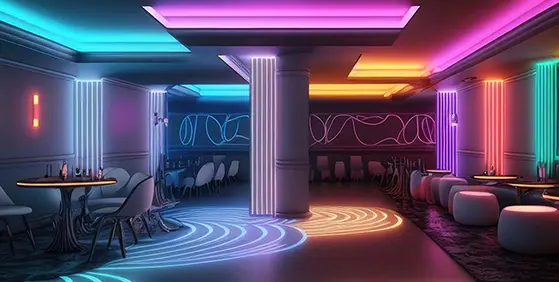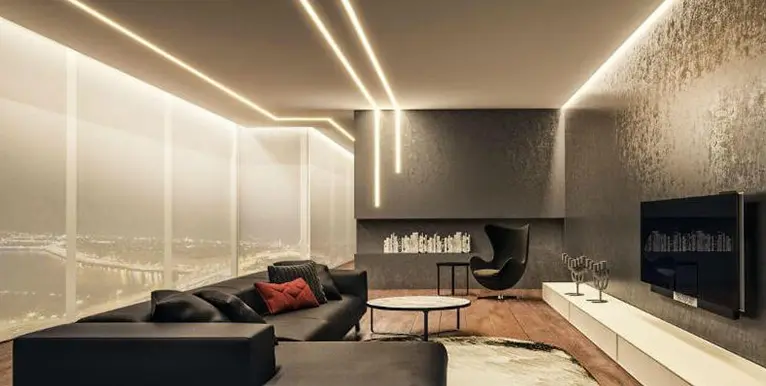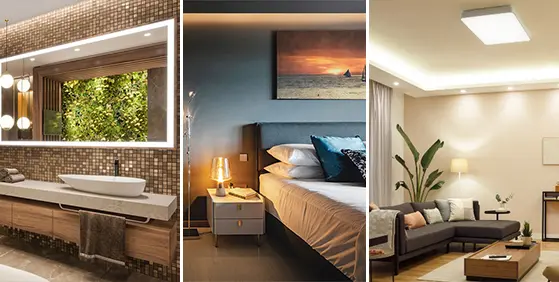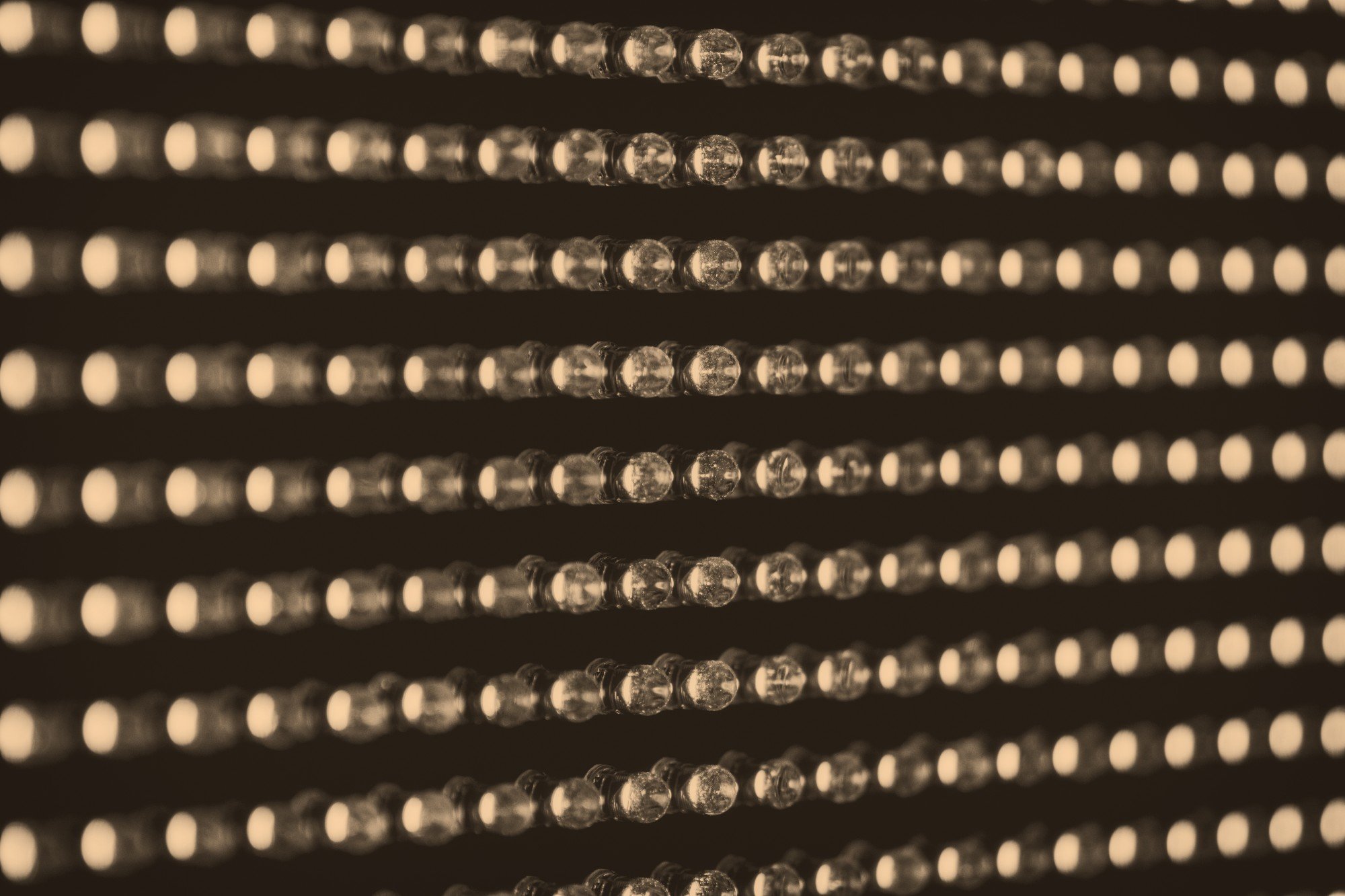Are you tired of staring at your plain, blank wall? Wall art can bring any room to life. Canvases and other artistic ornaments impact the space and enhance its aesthetic. However, if you like pretty lights and fun patterns, we might have the thing for you.
LED lights are a unique, energy-efficient, and cost-saving way to decorate your home. Some sculpt or create optical illusions using LED lighting. Learn more about LED wall art below.
LED-Lighted Wall Art
As its name suggests, LED-lighted wall art is a decoration that uses LED lights. Many people explore its innovative way of setting effects in a space. From subtle colour changes to different animations, this decoration combines technology and art.
To enhance the space, put an LED wall art near or on a blank canvas. It establishes spectacular lighting effects and depth that create a good experience.
There are different styles of LED wall art to incorporate in a space. It includes modern, abstract, optical illusion, and sculpture. Each of them adds a unique detail and ambience to a room.
Unlike other types of wall art, an LED-lighted decoration is versatile. It allows you to create new ideas appropriate to use in a room.
3D Optical Illusions
An optical illusion is a visual perception that tries to deceive your vision. It makes things appear different from their true selves.
With LED lights, you can create a 3D optical illusion. It can be in any pattern, such as portraits or objects. In most cases, people use an acrylic panel and an LED base.
They transfer a 3D pattern into a 2D drawing vector file for laser engraving. Next, they place the carved panel in a reserved slot on the base. Then, the LED lights transmit lights to the acrylic panel.
The other method consists of LED light strips. Start by creating the pattern you want. Cut the light strips depending on the length needed. Insert them into LED guides or stick them into the pattern.
Creating LED Illusions With Light Strips
Creating a 3D optical illusion as a decoration is challenging. There are factors to consider before you can make a working artwork. Here’s how to create LED art using light strips.
Step 1: Design a Piece
When creating LED-lighted wall art, design the pattern you want to make first. Visualize and draw the design on paper. If you start making the piece, you can use the sketch as a basis for placing the strips.
Remember, optical art plays with different elements to deceive your vision. Your design must give the impression of movement.
To guarantee mind-bending effects, take time to craft the elements and techniques. You must focus on presenting light and shadows in your sketch. Use apt colouring and shading techniques to create movement.
Before bringing the design to life, ensure it is right for the space you plan to display it.
Step 2: Prepare LED Light Strips
After sketching your design, prepare the materials you need for the project. It includes LED light strips, LED guides, a circuit playground, and a barrel jack. Never forget the tools, such as pliers, cutters, and electronic toolkits.
You can insert light strips inside LED guides or stick them to the pattern. If you want a clean output, choose the former.
When using LED guides, remove the silicone tube surrounding the light strips. Use a cutter to cut the end cap and a part of the tubing. Separate the strip from the tubing after removing the other end cap.
Cut along the dividing line and a generous length of the red and blue wire. Then, insert the strip into the LED guides. Check the side from which you must place them and the direction they need to face.
Step 3: Assembling the LED Wall Art
Assemble the LED wall art after inserting every piece of light strips into the guides.
Start by putting the nuts in place and screwing them. Next, fasten the barrel jack onto the perma-proto board. Connect the top pin to the topmost pad using a piece of wire.
Your power supply comes from this connection.
After setting the board, get the LED light strips. Screw them and thread the wires together. Then, strip a small part of the insulation and patch the exposed wire to the pad.
Test the LED lights to ensure they work. Before fastening the other strips, unplug the power supply.
Benefits of LED Art
LED-lighted wall art is a creative and innovative way to add depth to a space. The following are the rewards you can enjoy for creating and using this type of decoration.
Design Flexibility
From highlighting a centrepiece to becoming the highlight, you can use LED lights in different ways. The strips are small enough to fit any lighting decoration. Moreover, they come in different styles.
You can create LED sculptures by shaping acrylic panels. For wall art, you can work on making 3D optical illusions. LED lights give you many options for using them in a space.
Energy-Efficient
Another benefit of using LED lights is they are energy-efficient. Unlike other lights, this uses less energy to give the same results. Using LED lighting is beneficial to the environment.
Apart from its energy-efficient feature, it helps you reduce your waste production. It does not use toxic chemicals that are harmful to the environment. Moreover, it has a longer life span than other types of lights.
Cost-Saving
A report states that LED lights use at least 75% less energy than incandescent lighting. With this, you never have to worry about rising electricity bills with LED wall art. Consider changing your entire lighting system to save energy and money.
If you consume less energy, the less you have to pay for your bill.
Light the Room With an LED-Lighted Wall Art
Putting LED-lighted wall art is a rising trend in interior design. From sculptures to optical illusions, people get creative in decorating using LED lighting.
For LED light supplies, you can count on Smart Lighting. We offer quality home products and services. For queries about LED lighting, contact our team of professionals here!










